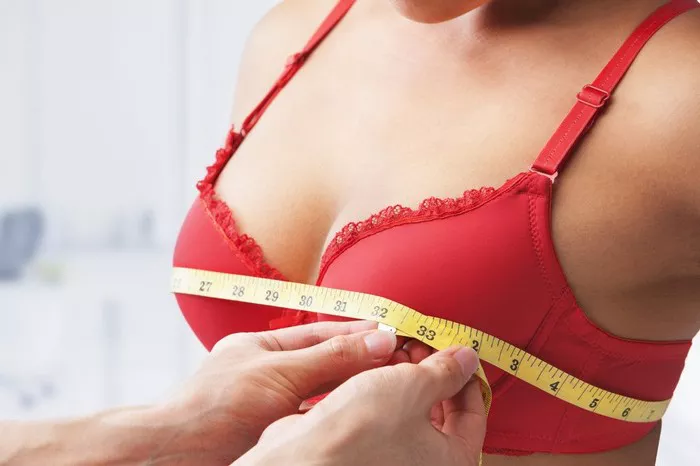Silicone implants have been a popular option for breast augmentation for decades. However, there have been concerns about the safety of silicone implants, particularly in the 1990s when they were banned in the United States. In recent years, silicone implants have been reintroduced and are once again a popular option for breast augmentation. In this article, we will provide a comprehensive guide to silicone implants, including their safety, benefits, risks, and how to determine if they are the right choice for you.
The History of Silicone Implants
Silicone implants were first introduced in the 1960s and quickly became a popular option for breast augmentation. However, in the 1990s, concerns about the safety of silicone implants arose, and they were banned in the United States. The ban was lifted in 2006, and silicone implants were reintroduced with new safety regulations and guidelines. Since then, silicone implants have become a popular option for breast augmentation once again.
The Safety of Silicone Implants
Silicone implants are considered safe for breast augmentation when they are used according to the guidelines and regulations set by the FDA. The FDA has approved several types of silicone implants for breast augmentation, including cohesive gel implants and saline implants. Cohesive gel implants are made with a thick, cohesive gel that holds its shape and provides a natural look and feel. Saline implants are filled with a sterile saline solution and are often used for women who prefer a firmer feel to their breasts.
Benefits of Silicone Implants
Silicone implants offer several benefits for breast augmentation. They provide a natural look and feel, and the cohesive gel implants are less likely to ripple or wrinkle than saline implants. Silicone implants are also available in a variety of sizes and shapes, making it easier for patients to achieve the desired outcome. Additionally, silicone implants are long-lasting and require less maintenance than saline implants, which may need to be adjusted or replaced over time.
Risks of Silicone Implants
While silicone implants are generally considered safe, there are some risks associated with the procedure. One of the most significant risks is the possibility of implant rupture or leakage. If a silicone implant ruptures, it can cause pain, swelling, and changes in breast shape. Additionally, there is a risk of capsular contracture, which occurs when scar tissue forms around the implant and causes it to harden or become misshapen. Other risks include infection, bleeding, and changes in nipple sensation.
Determining if Silicone Implants are Right for You
Determining if silicone implants are the right choice for you is a personal decision that should be made in consultation with a qualified plastic surgeon. During the consultation, the surgeon will evaluate your medical history, perform a physical examination, and discuss your goals and expectations for the procedure. They will also explain the risks and benefits of silicone implants and help you make an informed decision about whether they are the right choice for you.
Conclusion
In conclusion, silicone implants are generally considered safe for breast augmentation when used according to the guidelines and regulations set by the FDA. They offer several benefits, including a natural look and feel, long-lasting results, and a variety of sizes and shapes. However, there are some risks associated with the procedure, including implant rupture, capsular contracture, infection, bleeding, and changes in nipple sensation. Determining if silicone implants are the right choice for you is a personal decision that should be made in consultation with a qualified plastic surgeon. By understanding the risks and benefits of silicone implants and working with a skilled surgeon, patients can achieve the desired outcome and improve their confidence and self-esteem.
FAQs
1. What is the healthiest breast implant?
The healthiest breast implant option depends on individual factors such as body type, cosmetic goals, and personal preferences. Saline and silicone implants are the two main types available. Saline implants are filled with sterile saltwater solution and are often considered safe because they pose minimal health risks if ruptured. Silicone implants, filled with silicone gel, closely mimic the feel of natural breast tissue and are popular for their aesthetic results.
2. Why were silicone implants taken off the market?
In the 1990s, concerns arose about the safety of silicone breast implants due to reports of silicone leakage and associated health issues. As a precautionary measure, silicone implants were temporarily removed from the market while extensive studies were conducted to assess their safety. However, subsequent research found no conclusive evidence linking silicone implants to systemic health problems, leading to their reintroduction with improved design and safety features.
3. Do silicone implants cause health issues?
While rare, silicone breast implants can potentially cause complications such as implant rupture, capsular contracture (scar tissue formation around the implant), and implant displacement. Silicone leakage, known as silicone implant rupture, can lead to localized inflammation or silicone migration to surrounding tissues. However, extensive research and regulatory oversight have resulted in the development of safer silicone implants with enhanced durability and reduced risk of complications.
4. What are the best breast implants in 2024?
The best breast implant choice varies based on individual preferences, body type, and cosmetic goals. Both saline and silicone implants have evolved significantly over the years, offering improved safety, durability, and aesthetic outcomes. In 2024, silicone implants remain a popular choice due to their natural look and feel, while saline implants continue to be valued for their safety profile and adjustability. It’s crucial to consult with a board-certified plastic surgeon to determine the most suitable breast implant option tailored to your specific needs and desired results.


